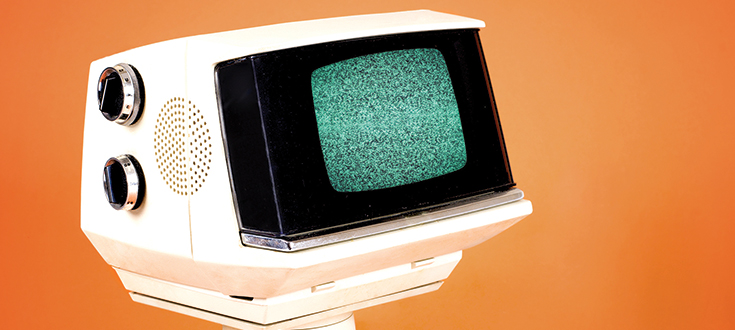
Yesterday’s harebrained projection can become tomorrow’s reality
I was about to do what likely 10,000 other marketing professionals are doing, to play futurist on the year ahead. What’s hot? What’s not?
Rather than add to the lists of current trends and prognostications, I’m going to encourage you to read others’ predictions. I’ve been around long enough to know that so-called trendspotters never miss. They are either right or waiting to be right. No matter how outlandish some ideas may sound, I’m going to push you to read with an open mind and a level of curiosity that should be second nature for any marketer.
One of my favorite communication tactics is a “head fake.” It refers to hearing a description of something that happened at a certain point in time, only to learn that the event really occurred at an entirely different point in history. I’ve used head fakes effectively over the years; the tactic came to mind as I reviewed an AMA conference presentation from 50 years ago. It provided the perfect opportunity for a head fake.
In 1967, Paul Baran attempted to predict the future state of the year 2000, some 33 years into the future. Even the title, “Some Changes in Information Technology Affecting Marketing in the Year 2000,” has a tone of unassuming modesty, as if to say, “Here are a few ideas I have. They’re half-baked, so don’t be too critical.”
I’ve taken the liberty to draw excerpts from that presentation, which, in my opinion, was nothing short of prophetic. I’ve handpicked various concepts Baran described.
Think about how you could refine these remarks, stand up in front of savvy marketers and describe the world in which we live today, some 50 years after Baran called his shot like Babe Ruth.
In 1967, Baran’s audience probably thought his comments read as though they had been pulled from a low-budget science fiction film. But Baran’s musings foreshadowed the power of the internet, including services like Skype and FaceTime, Netflix and YouTube, Yelp and Angie’s List, and Amazon’s many services.
“The new computer-communications technology could revolutionize the entire process of distribution of goods. … Such development will represent a profound change in our traditional form of distribution. … Specifically, an interactive, automated, information processing system which allows rapid and friendly coupling between an individual and a huge information base.”
Baran’s comments could have been made 25 years later by Steve Jobs or Bill Gates. The head fake is only getting started as he then outlines his vision of videoconferencing.
“[W]e can realistically expect widespread large-screen, color, person-to-person TV communications. … This development will attempt to create the illusion that those in TV communications with one another are in effect within the same room.”
This sounds a lot like Skype, FaceTime and other videoconferencing platforms.
“Entertainment, even for the smallest select audience, will come via the screen. We no longer will be constrained by the paucity of channels which restricts present television to sponsors fighting for the largest slice of the audience, and in the process catering to the tastes of the lowest common denominator.”
Does that sound like Netflix, YouTube, Hulu and other streaming media services? This prediction is powerful in light of Disney‘s merger with 21st Century Fox or the potential merger of AT&T and Time Warner. These icons are transforming themselves to stay relevant, but I wonder if they are too late.
In addition to new channels for distributing products, Baran also predicted new methods for individuals to exchange information about those products.
“When the consumer reaches the lower end of the selection tree and has narrowed his choice to a small number of contending products, it becomes plausible and appropriate to call up specific advertising for each. This is the socially beneficial use of advertising. Here, the recipient wants to read, to see and to hear advertising. … The consumer can be encouraged to use valid comparative testing information to help decide which product is ‘best.’ ”
It’s a predication of electronic word-of-mouth systems such as Yelp, Angie’s List and Google Reviews.
“Much of the shopping will be done from home via TV display. Think of this screen as a general-purpose genie. Pressing a few buttons on a keyboard allows interaction with a powerful information processing network. The information network sends back a modified image to the TV display in response to selections. … The customer wants to know prices and delivery before reaching a final decision. The information storage system can tell him whether the pink shirts with tab collars are available, from whom, when and at what price. Price comparisons are instantaneous and again reinforce the free enterprise price mechanism. Direct dealing with the manufacturer will increase, as the goods will be dispensed from the most economic storage point.”
This accurately points to Google, Amazon, the Home Shopping Network and online retailers.
While it took time for technology to become readily available, you shouldn’t be surprised that Baran was able to leap from early online shopping to today’s more sophisticated form of online consumerism.
“Consider another class of goods whose purchase is totally a repetitive nuisance to the consumer—shopping for staple groceries. Once finding a brand of pickled string beans that suit your fancy, you wish to reorder the exact product without having to play Sherlock Holmes. You would like to be able to reorder many such items painlessly. Again, the computer can come to our aid by providing us with a stored list for rapid recall ordering. The better information available about alternative prices for the same goods will eliminate the undignified loss-leader game to trick the consumer into the store.”
It sounds like the pitch for Amazon Subscriptions and smart-home services.
As you read through the prognostications of the years to come, take a second look at the ideas that now seem unbelievable or farfetched. It may be that what seems barely possible today will soon become reality.
Russ Klein
Source: www.ama.org

